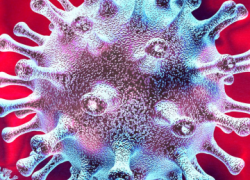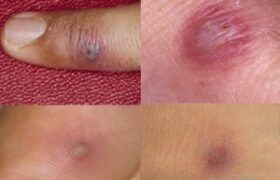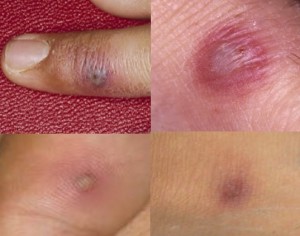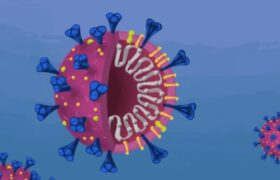Health Effects of PM2.5
Mortality and Morbidity:
Long-term exposure to PM2.5 contributed to 4.14 million deaths globally in 2019, accounting for 62% of all air pollution-related deaths. This represents a 23% increase over the past decade(2).
In China, PM2.5 exposure in 2019 was linked to 21,113 all-cause deaths, with significant declines in cardiovascular and respiratory deaths compared to 2015 due to improved air quality measures(9).
Cardiovascular and Respiratory Diseases:
PM2.5 is associated with premature death in individuals with heart or lung disease, nonfatal heart attacks, irregular heartbeat, and aggravated asthma(3).
It can penetrate deep into the lungs and bloodstream, causing inflammation, oxidative stress, and genotoxicity, which contribute to cardiovascular and respiratory disorders(10)(12).
Systemic Effects:
Beyond the lungs and heart, PM2.5 exposure affects the renal, neurological, gastrointestinal, and reproductive systems. It has been linked to chronic kidney disease, neurodegenerative disorders like Alzheimer’s, and adverse birth outcomes(10)(12).
Vulnerable Populations:
Children, older adults, and individuals with preexisting conditions are more susceptible to PM2.5-related health issues. Low socioeconomic status and minority populations often face higher exposure levels(3).
Mechanisms of PM2.5-Induced Health Damage
Oxidative Stress and Inflammation:
PM2.5 triggers the production of reactive oxygen species (ROS), leading to cellular damage and inflammation. This process is a key mechanism behind its toxic effects(10)(12).
Immune System Activation:
Exposure to PM2.5 activates immune responses, including the release of pro-inflammatory cytokines like IL-6 and TNF-α, which exacerbate tissue damage(10).
Genotoxicity:
PM2.5 can cause DNA damage, increasing the risk of cancer and other chronic diseases(12).
Can I go Outdoor during PM 2.5 ?
Yes , if air quality is fine (0-12 microgram/m3 PM2.5)
What pm2.5 range should I consider to avoid prolong outdoor exercise?
Moderate (12-35 µg/m³):
Air Quality: Acceptable
Recommendation: Generally safe for most people. Those who are unusually sensitive to air pollution should consider reducing prolonged or heavy exertion.
When I have to avoid outdoor exercise?
Unhealthy for Sensitive Groups (35-55 µg/m³):
Air Quality: May cause health issues for sensitive individuals (e.g., people with asthma, heart disease, or respiratory conditions).
Recommendation: Sensitive groups should reduce prolonged or heavy outdoor exertion. Healthy individuals can usually continue outdoor activities but should monitor for symptoms like coughing or shortness of breath.
Unhealthy (55-150 µg/m³):
Air Quality: Everyone may begin to experience health effects.
Recommendation: Limit prolonged or heavy exertion outdoors. Sensitive groups should avoid outdoor exercise. Consider indoor activities instead.
What level is very hazardous level?
Very Unhealthy (150-250 µg/m³):
Air Quality: Health warnings of emergency conditions.
Recommendation: Avoid outdoor exercise. Everyone, especially sensitive groups, should stay indoors and keep activity levels low.
Hazardous (250+ µg/m³):
Air Quality: Health alert: everyone may experience more serious health effects.
Recommendation: Stay indoors and avoid all physical activity outdoors.
reference
(1)ScienceDirect2024/12/011
An update on adverse health effects from exposure to PM2.5
The suggested mechanisms by which PM 2.5 induces adverse health effects include the initiation of oxidative stress, inflammation, genotoxicity, and immunotoxicity. These findings provide insights into the mechanisms linking PM 2.5 exposure and health effects.
(2)State of Global Air2
Health Impacts of PM2.5 – State of Global Air
Health effects attributable to long-term exposure to PM 2.5 include ischemic heart disease, lung cancer, chronic obstructive pulmonary disease (COPD), lower-respiratory infections (such as pneumonia), stroke, type 2 diabetes, and adverse birth outcomes.
(3)U.S. Environmental Protection Agency2024/07/163
Health and Environmental Effects of Particulate Matter (PM)
Particles less than 10 micrometers in diameter pose the greatest problems, because they can get deep into your lungs, and some may even get into your bloodstream. Fine particles (PM2.5) are the main cause of reduced visibility (haze).
(4)ScienceDirect2023/05/014
Overview of PM2.5 and health outcomes: Focusing on components, sources …
This study provides a systematic overview of (1) the relationship between PM 2.5 exposure and health risks, (2) the sources and toxic effects of different PM 2.5 compositions, and (3) the health impacts of interactions between PM 2.5 and other pollutants.
(5)ScienceDirect2021/10/155
Assessing the health impacts attributable to PM2.5 and ozone pollution …
Specifically, the objectives of this study are (1) to assess the annual PM 2.5 – and ozone-related health impacts on all Chinese cities from 2015 to 2020; (2) to discuss the spatio-temporal characteristics of health impacts in Chinese cities; (3) to evaluate the health effects of air pollution prevention and control in China during the 13th-FYP …
(6)ScienceDirect2016/06/016
The health effects of ambient PM2.5 and potential mechanisms
Epidemiological and toxicological studies have shown that PM 2.5 does not only induce cardiopulmonary disorders and/or impairments, but also contributes to a variety of other adverse health effects, such as driving the initiation and progression of diabetes mellitus and eliciting adverse birth outcomes.
(7)Nature2023/12/157
First close insight into global daily gapless 1 km PM2.5 pollution …
Exposure to PM 2.5 (particulate matter with aerodynamic diameters ≤ 2.5 µm) pollution is associated with a variety of circulatory and respiratory diseases 2, 3, 4, 5, contributing to 4…
(8)pmc.ncbi.nlm.nih.gov8
Toxicological Effects of Fine Particulate Matter (PM2.5): Health Risks …
Previous studies focused on investigating particulate matter with aerodynamic diameter ≤ 2.5 µm (PM2.5) have shown the risk of disease development, and association with increased morbidity and mortality rates. The current review investigate …
(9)Nature2024/05/169
Changes of PM2.5 and O3 and their impact on human health in the …
PM 2.5 and O 3 pose significant risks to human health, as they can irritate the respiratory tract, leading to symptoms such as coughing, wheezing, and shortness of breath 13. These pollutants…
(10)link.springer.com2023/05/2410
Toxicological Effects of Fine Particulate Matter (PM2.5): Health Risks …
The current review investigate epidemiological and experimental findings from 2016 to 2021, which enabled the systemic overview of PM2.5’s toxic impacts on human health. The Web of Science database search used descriptive terms to investigate the interaction among PM2.5 exposure, systemic effects, and COVID-19 disease.
(11)WHO2021/09/2211
WHO global air quality guidelines: particulate matter (PM2.5 and PM10 …
In 2015, the World Health Assembly adopted a landmark resolution on air quality and health, recognizing air pollution as a risk factor for noncommunicable diseases such as ischaemic heart disease, stroke, chronic obstructive pulmonary disease, asthma and cancer, and the economic toll they take.
(12)PubMed12
The health effects of ambient PM2.5 and potential mechanisms
The proposed underlying mechanisms whereby PM2.5 causes adverse effects to public health include inducing intracellular oxidative stress, mutagenicity/genotoxicity and inflammatory responses. The present review aims to provide an brief overview of new insights into the molecular mechanisms linking ambient PM2.5 exposure and health effects …
(13)mdpi.com2022/10/1013
Health Effects of PM2.5 Exposure in China from 2004 to 2018: A … – MDPI
A systematic review shows that there are 30 diseases and 46 health effect outcomes with clear concentration–response relationships with PM2.5 in China. Seven health effects were investigated by meta-analysis.
(14)pmc.ncbi.nlm.nih.gov14
Recent Insights into Particulate Matter (PM2.5)-Mediated Toxicity in …
According to the most recent data, fine particulate matter, or PM 2.5, is responsible for nearly 4 million deaths globally from cardiopulmonary illnesses such as heart disease, respiratory infections, chronic lung disease, cancers, preterm births, and other illnesses.
(15)ACS Publications2021/12/2315
Tracking PM2.5 and O3 Pollution and the Related Health Burden in China …
Recent clean air policies brought great health benefits dominated by decrease in PM 2.5, but short-term O 3 -associated deaths has become nonnegligible. 1. Introduction. Air pollution has been a threat to public health and the ecological system in China.
(16)Springer2022/03/1616
Health Effects of Long-Term Exposure to Ambient PM2.5 in Asia-Pacific …
Health effects of long-term exposure to ambient PM 2.5 vary with regions, and 75% of the deaths attributable to PM 2.5 were estimated in Asia-Pacific in 2017. This systematic review aims to summarize the existing evidence from cohort studies on health effects of long-term exposure to ambient PM 2.5 in Asia-Pacific.
(17)Nature2024/12/1917
Health burdens related to emission sources and cross … – Nature
The health impacts of PM 2.5 and ozone can be attributed to their precursor emissions, by source category, species, and region. Such analysis is valuable, as it allows for targeted and…
(18)pmc.ncbi.nlm.nih.gov2016/01/1918
The impact of PM2.5 on the human respiratory system – PMC
Understanding how PM2.5 leads to respiratory diseases will assist in preventing and diagnosing the corresponding health issues and the evolution of more effective methods and technologies for the treatment of PM2.5-induced diseases.
(19)The Lancet19
The Lancet Countdown on PM2·5 pollution-related health impacts of China …
We calculated the PM 2·5 concentrations and compared the health impacts and implementation costs between two scenarios that reflect CO 2 and air pollutant emissions—the reference (REF) scenario (no climate policy) and the NDC scenario (100% realisation of NDC targets: CO 2 emission intensity needs to be about 40% below 2010 emissions by 2030 …
(20)PubMed2022/03/2220
Health Effects of Long-Term Exposure to Ambient PM2.5 in Asia-Pacific …
This systematic review aims to summarize the existing evidence from cohort studies on health effects of long-term exposure to ambient PM 2.5 in Asia-Pacific. Recent findings: In Asia-Pacific, 60 cohort studies were conducted in Australia, Mainland China, Hong Kong, Taiwan, and South Korea.
(21)ScienceDirect2023/06/1521
Tracing the sources of PM2.5-related health burden in China
Fine particulate matter (PM2.5) poses a major environmental risk to human health. We estimated PM2.5-related premature deaths in 30 Chinese provinces in 2020 using an integrated exposure response model based on monitored concentrations and obtained regional and sectoral contributions based on the atmospheric transport of the atmospheric …
(22)U.S. Environmental Protection Agency2024/08/0122
Clinical Outcomes Related to Particulate Matter Exposure and …
Hundreds of scientific studies have found that breathing in fine particulate matter (PM2.5) over the course of hours to days (short-term) and months to years (long-term) can lead to a variety of health effects, including harmful effects on blood vessels and the heart.
(23)ACS Publications2016/04/1123
Economic Impacts from PM2.5 Pollution-Related Health Effects in China …
This study evaluates the PM2.5 pollution-related health impacts on the national and provincial economy of China using a computable general equilibrium (CGE) model and the latest nonlinear exposure–…
(24)ACS Publications2024/06/0524
Association between Long-Term Exposure to PM2.5 Inorganic Chemical …
Long-term exposure to higher levels of PM 2.5 inorganic compositions was associated with significantly increased cardiopulmonary mortality, with SO 42– potentially being the primary contributor. These findings offer insights into how PM 2.5 sources impact health, aiding the development of more effective governance measures. CC-BY-NC-ND 4.0 .
(25)AGU Publications2022/03/1425
A Health Impact and Economic Loss Assessment of O3 and PM2.5 Exposure …
Based on ozone (O 3) and fine particulate matter concentration (PM 2.5) monitoring data in 331 Chinese cities from 2015 to 2020, this study evaluated the health effects and the corresponding economic losses of O 3 and PM 2.5 pollution on three health endpoints.
(26)Cell Press2024/10/2526
Long-term exposure to PM2.5 has significant adverse effects on …
Evidence suggests that long-term exposure to fine particulate matter (PM 2.5) may be an important risk factor for developing asthma. However, inconsistencies in findings from earlier epidemiological studies have left this potential health risk under debate.
(27)ACS Publications27
Economic Impacts from PM2.5 Pollution-Related Health Effects: A Case …
In this study, we examine the health and economic impacts from PM 2.5 pollution under various air pollution control strategies and climate policies scenarios in the megacity of Shanghai.
(28)ScienceDirect2023/05/2028
Substantial short- and long-term health effect due to PM2.5 and the …
For PM 2.5 constituents, organic carbon leads to the most short-term exposure deaths. We find an amplified health effect due to compound events compared to single events. Heavy pollution events of fine particulate matter (PM 2.5) frequently occur in China, seriously affecting the human health.
(29)BMC Public Health2025/01/2929
Ambient air pollution and Alzheimer’s disease and … – BMC Public Health
Stratified analyses by Global North–South divide and human development index were performed to explore the potential inequity in air pollution impacts. During 1990–2019, the global ASMR, DALYs and O3 increased by 0.11%, 0.09%, and 0.17% per year, respectively. In contrast, PM2.5 and NO2 decreased by 0.33% and 0.14% per year, respectively.
(30)PubMed2022/03/1530
Long-term PM2.5 exposure and various health outcomes: An umbrella …
Adverse effects from exposure to particulate matter <2.5 μm in diameter (PM 2.5) on health-related outcomes have been found in a range of experimental and epidemiological studies. This study aimed to assess the significance, validity, and reliability of the relationship between long-term PM 2.5 exposure and various
(31)ScienceDirect2020/05/1531
Acute and chronic health impacts of PM2.5 in China and the influence of …
Although heavy pollution episodes and their related health impacts attract substantial public attention, we find that the long-term health impacts caused by ambient PM 2.5 concentration are more important for the overall public health burden. These results suggest that policy makers need not only to control and prevent heavy pollution episodes …
(32)UN News2025/02/0732
Toxic air threatens children’s lives across East Asia and the Pacific …
Nearly half of PM2.5 pollution in the worst-affected countries comes from the burning of fossil fuels, biomass, and agricultural waste – also major contributors to climate change. As extreme weather events worsen due to climate change, air pollution is expected to become an even greater threat, UNICEF warned. Impacts beyond health
(33)Springer2024/05/0233
The effect of fine particulate matter (PM2.5) pollution on health …
This research introduces PM2.5 pollution into the intergenerational health transmission model, and estimates its impact on health inequality in China using Ordered Logit Regression (OLR) and Multi-scale Geographically Weighted Regression (MGWR) model.
(34)Nature2025/02/0434
Rising socio-economic costs of PM2.5 pollution and medical service …
The harmful impact of fine particulate matter (PM2.5) air pollution on public health remains a pressing concern. Detrimental effects of such pollution on elderly populations can be exacerbated by …
(35)PubMed2025/02/0735
Long-Term Exposure to Fine Particulate Matter (PM2.5 … – PubMed
Background: The increasing incidence of precocious puberty is a major health challenge for Chinese children, while related risk factors remain less well explored. Exposure to ambient fine particulate matter (PM2.5) is a leading environmental hazard in China. Although certain components of PM2.5 have been reported to be endocrine disruptors for sex hormones, population-based evidence is still …
(36)ACP2025/02/0436
Impacts of meteorology and emission reductions on haze pollution during …
Fine particulate matter (PM 2.5) is a critical issue for both policymakers and the general public due to its widespread presence and adverse impacts on human health (Lelieveld et al., 2018), agriculture productivity (Dong and Wang, 2023), and the Earth’s radiation balance (Li et al., 2022; Yang et al., 2021).The formation and accumulation of anthropogenic PM 2.5 result from a complex …
(37)Medical Xpress2025/02/0737
Air pollution’s dual threat: Health and economic impacts on aging societies
Air pollution is a growing health issue worldwide, and its impacts are often underestimated in aging societies like Japan. … Rising socio-economic costs of PM2.5 pollution and medical service …
(38)pmc.ncbi.nlm.nih.gov38
Long- and Short-Term Exposure to PM2.5 and Mortality: Using Novel …
Multiple studies in the United States and worldwide have shown associations between exposure to ambient particulate matter (PM) and adverse health effects. 1–6 These adverse health effects include asthma, 7 cardiovascular problems, 3,8–12 respiratory infections, 13–17 lung cancer, and mortality. 18–22
(39)ScienceDirect2022/03/0139
Assessing the evolution of PM2.5 and related health impacts resulting …
The mean PM 2.5 concentration in the first half of 2021 was 34 μg/m 3 (the World Health Organization (WHO) guideline suggests that PM 2.5 should not exceed 5 μg/m 3 annual mean). Therefore, it is necessary to review the long-term evolution of air pollution in China and the effect of policies implemented to better formulate new plans and …
(40)Springer2024/08/0240
Short-term Exposure to PM2.5 and Cardiorespiratory Mortality and …
Exposure to ambient fine particulate matter (PM2.5) is a substantial environmental health issue for urban inhabitants in Ho Chi Minh City (HCMC). The effects of short-term exposure to ambient PM2.5 on cardiorespiratory mortality and morbidity were determined in HCMC by a retrospective, hospital-based, unidirectional, and symmetric bidirectional case-crossover study. Ambient PM2.5 …
(41)Harvard T.H. Chan School of Public Health2025/01/3141
The health impacts of wildfires: Frequently asked questions | Harvard T …
One study estimated chronic health impacts from indoor exposures to various air pollutants and found PM 2.5 to account for the greatest burden, … Look for one that measures airborne particles (PM2.5) and airborne gases (TVOCs). These are imperfect measures, but will give you a sense of how your space is being impacted or not. For more …
(42)ScienceDirect2019/09/0142
Human health impact and economic effect for PM2.5 … – ScienceDirect
Exposure to hazardous PM 2.5 would not only trigger human health impact, but also result in an economic loss for both society and individual. In this study, the PM 2.5-related health impact and corresponding economic loss are assessed in
(43)ScienceDirect43
Population exposure evaluation and value loss analysis of PM2.5 and …
These results were based on well-continued large spatial scale PM 2.5 and O 3 concentration data, and population data, and highlighted the significant impacts of both on public health in





